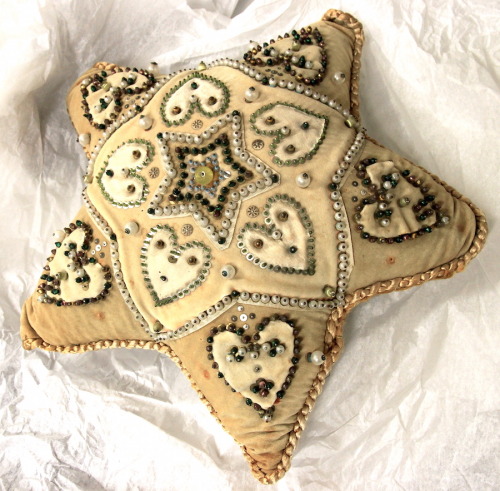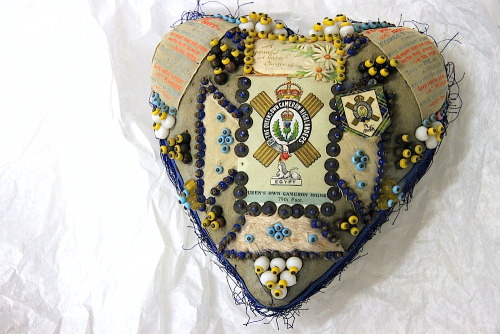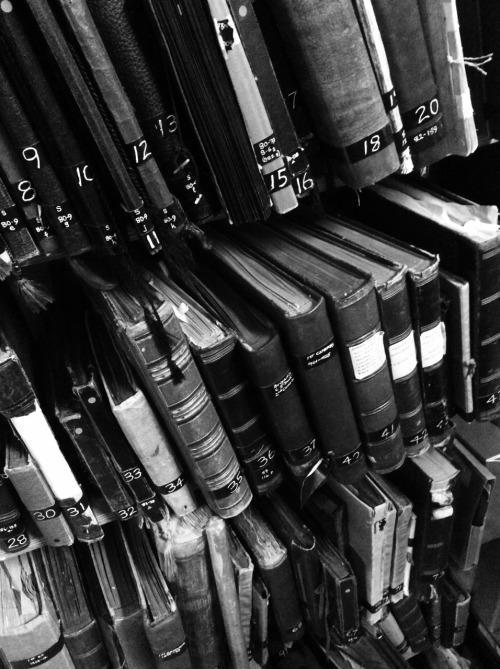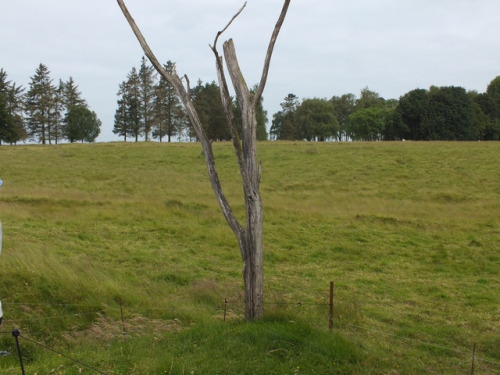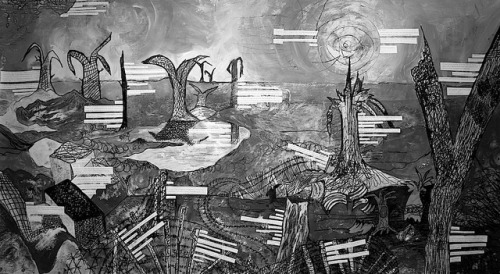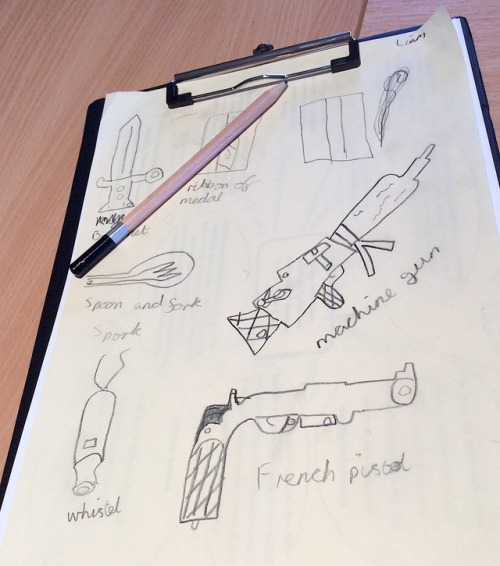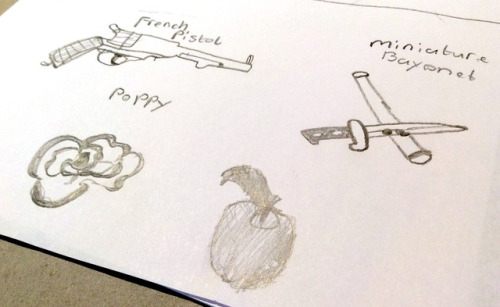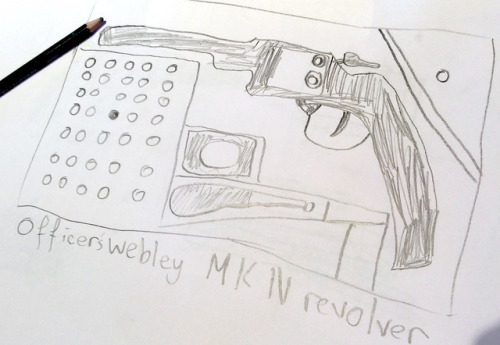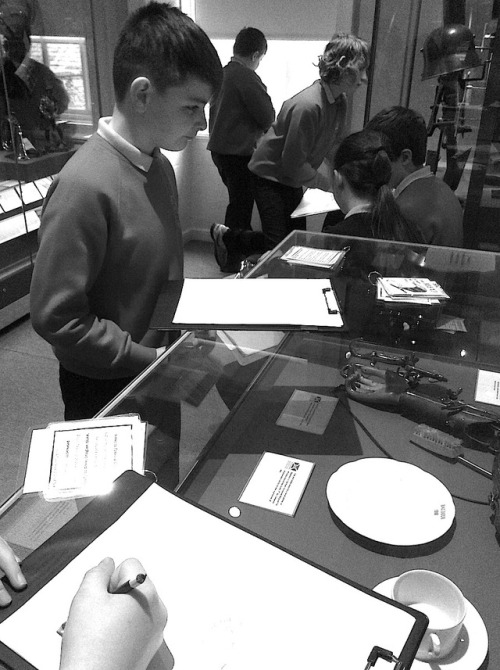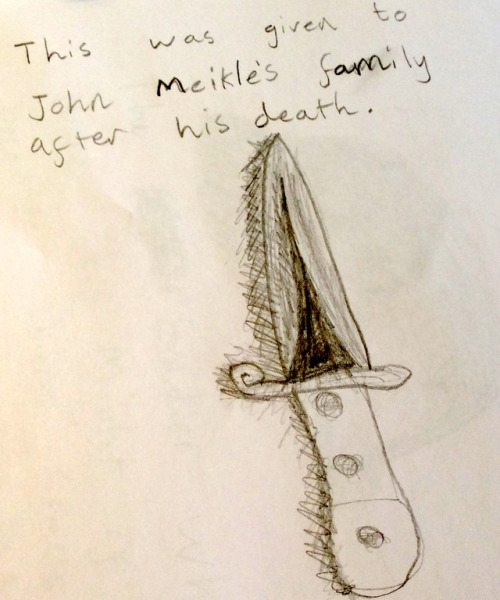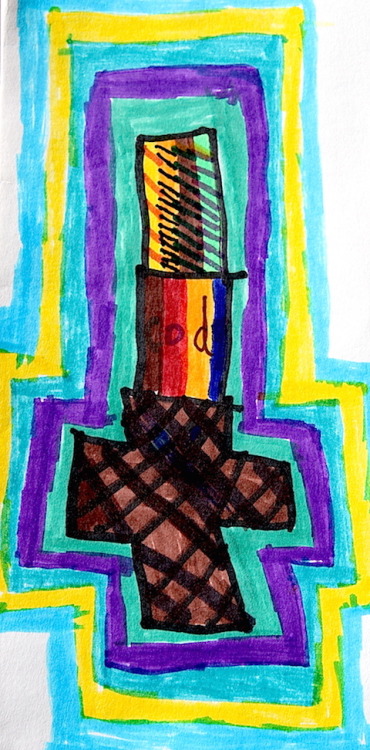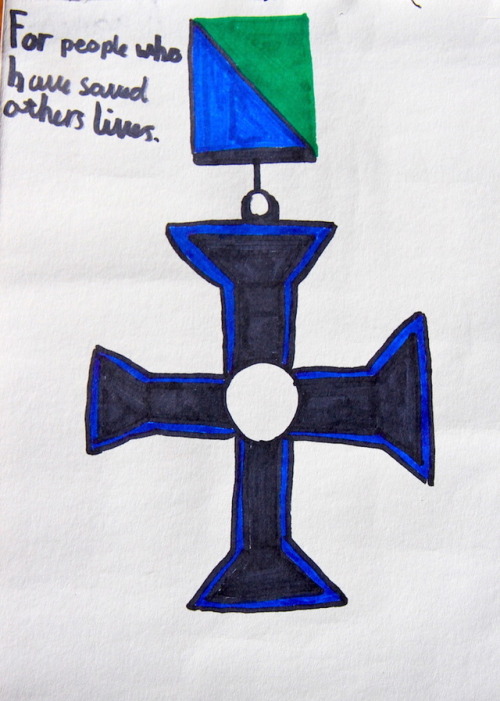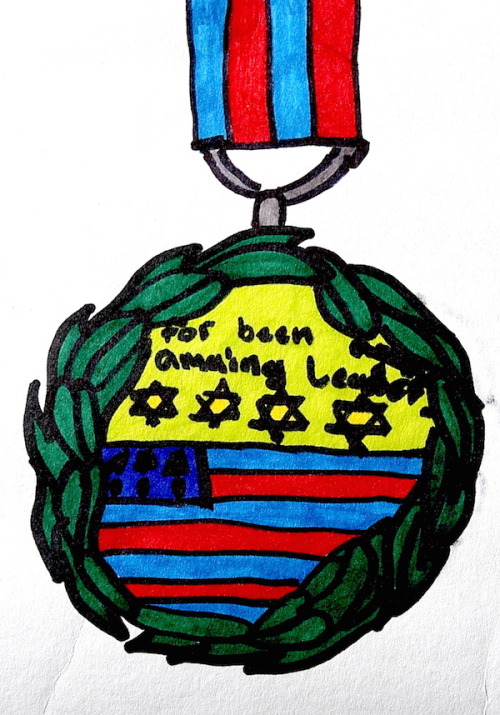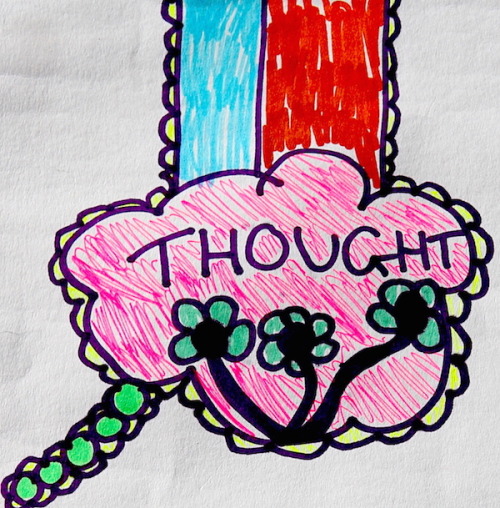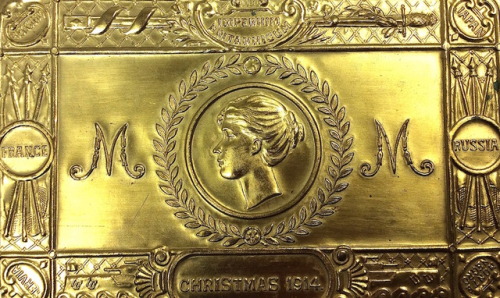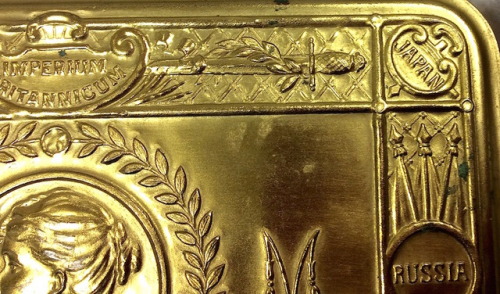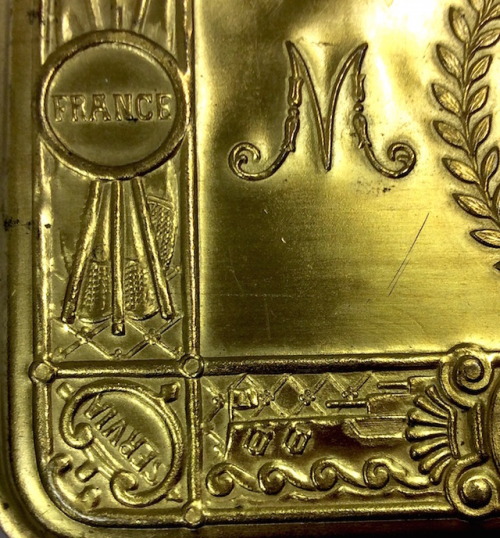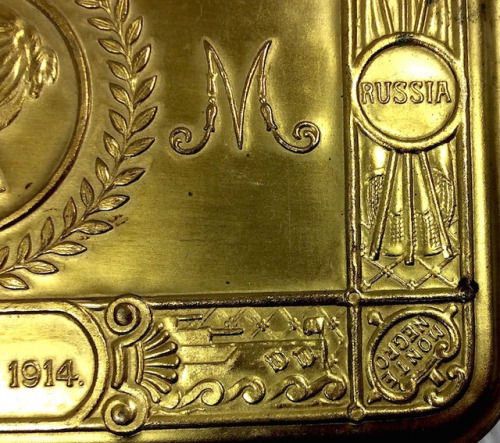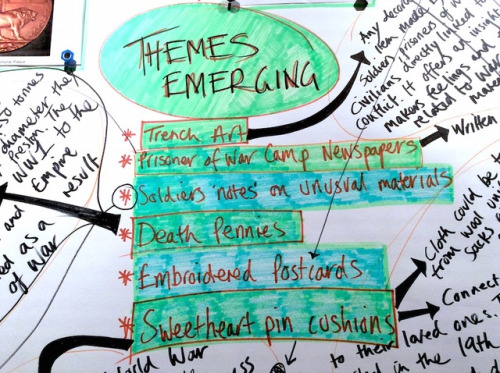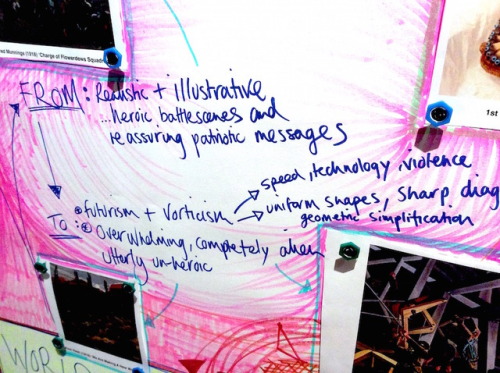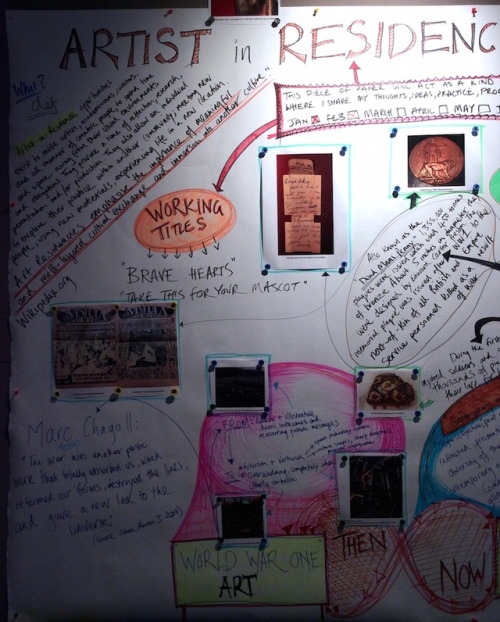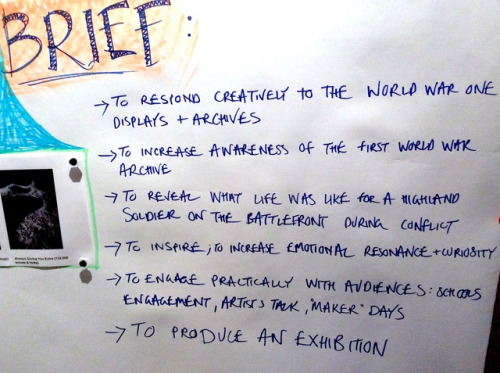#queens own highlanders collection
Think of Me …. ‘Sweetheart’ pin cushions
Sometimes sold in commercially available kits and sometimes made out of scrounged thread, feed sacks and woollen cloth taken from uniforms.
The tradition began in the 19th Century with Queen Victoria who, as an amateur practitioner of textile arts, thought soldiers may find quilting or needlepoint a welcome distraction during convalescence or times of loneliness. The tradition carried on throughout WW1 and the archive at the fort contains some fascinating examples of such pieces.
Materials included paper decoupage, glass beads, metal pins and plastic alongside sequins and braids.
Inscription:
‘Think of Me When the golden sun is sinking, and your mind from care set free, when of others you are thinking, will you sometimes Think of Me’
The activity was mostly undertaken by men and the pincushions were stuffed with a variety of materials including sawdust.
Further information can be found here:
http://www.gmmg.org.uk/our-connected-history/item/sweetheart-pin-cushion/
Post link
Photographic Archive.
The Highlanders’ Museum (Queen’s Own Highlanders Collection) archive covers the The Highlanders (4 SCOTS), Seaforth Highlanders, Queen’s Own Cameron Highlanders, Queen’s Own Highlanders (Seaforth and Cameron’s), Lovat Scouts, Liverpool Scottish, and our overseas allied regiments from Canada, Australia, New Zealand and 7th (DOE) Gurkha Rifles.
Post link
Image 1: Beaumont Hamel - Battle of the Somme. This image was provided by Dave Chapman, Research and Volunteer Coordinator at the museum in response to our battlefield mural below it. He took this photograph on a battlefield tour and went on the tell me that the tree was used by both sides as a reference point for target indications during WW1.
Image 2: Battlefield mural created by Ardesier Primary School children as part of my Artist Residency
Post link

Primary School Medal Workshop (photoset 2 of 2)
I’ve been exploring WW1 medals, honours and awards with a group of local primary school children. We’ve taken inspiration from medals found within the collection at the Highlanders Museum, Inverness.
The workshop also considered shape, design, context & colour when creating our imaginary awards.
Post link
Highlanders’ Museum (Queen’s Own Highlanders Collection) / The Princess Mary 1914 Christmas Gift
The design depicts the head of Princess Mary in the centre, a laurel wreath surrounds her and she is flanked by the ‘M’ monogram. A decorative cartouche contains the words “Imperium Britannicum” at the top with a sword, bayonet and scabbard (for the Army) either side. On the lower edge, another cartouche contains the words “Christmas 1914”, which is flanked by the bows of two Dreadnnoughts (for the Royal Navy) forging through deep seas.
The corners display the names of the Allies: Belgium, Japan, Montenegro and Servia; France and Russia at the edges, each superimposed on their furled flags or standards.
The Princess Mary’s Christmas Gift Fund was launched on October 14th 1914, with subsequent advertisements placed in the national press inviting monetary contributions to a “Sailors and Soldiers Christmas Fund”. Created by the 17 year old Princess Mary, daughter of King George V and Queen Mary, its purpose was to provide everyone on Active Service on Christmas Day with a “gift from the nation”.
Her public letter released by Buckingham Palace read:
“I have delayed making known a wish that has long been in my heart for fear of encroaching on other funds, the claims of which have been more urgent. I want you now to help me to send a Christmas present from the whole nation to every sailor afloat and every soldier at the Front. On Christmas Eve when, like the shepherds of old, they keep their watch, doubtless their thoughts will turn to home…I am sure that we should all be the happier to feel that we had helped to send our little token of love and sympathy…something that would be useful and of permanent value and the making of which may be the means of employment in trades adversely affected by the war”.
Every box contained a Christmas card and a picture of the Princess. Huge demands were made upon the already stretched postal service at the time yet more than 355,000 were delivered by the yuletide deadline. New Year deliveries contained a card that wished a ‘victorious new year’.
Parents of soldiers killed were entitled to boxes alongside nurses and the wounded. Prisoners of war at the time had theirs reserved until they were repatriated.
A shortage of brass also effected dispatch times and lead to many entitled personnel not receiving their gift until as late as the summer of 1916, and by January 1919 considerable numbers had still not been distributed.
When the fund finally closed almost £200,000 had been donated with more than two and a half million boxes with contents delivered by 1920.
There are a number of gift boxes held within the archive at the museum.
To find out more: http://www.iwm.org.uk/history/first-world-war-princess-mary-gift-box
Post link
Residency Progress Report / 20th February 2017
I’m lucky to have spent some concentrated time delving into the archives (photographic + object based) at the Highlanders’ Museum at Fort George, Inverness, over the past 6 weeks. It’s provided a fascinating, funny, and at times, incredibly poignant window onto the everyday lives of families, soldiers and regiments during World War One.
Naturally there are War Diaries, which detail strategic manoeuvres and life-saving co-ordinates, but there are also highly personal notes like the one sent from son to father which signs-off ‘Your dying son’or the postcard which reads ‘God bless my DEAR DADDY at the WAR and keep him safe’
Out of this densely woven web of narratives I’m beginning to navigate some ‘pathways for expression’ which will lead to an exhibition on-site from October 2017 - March 2018.
Image: The photographs above show my working space at the museum. It’s an ‘open-studio’ of sorts where I can communicate with people visiting the site, explore ideas and get a feel for the over-arching narratives that are emerging out of my residency.
Post link



